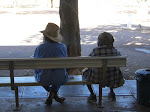Appreciation of Aboriginal art is increasing with its exposure worldwide. Here we will learn the history of this art form and the people who create it. An we will strive to understand the meanings of the symbols and discover the Aboriginal Dreaming that make this work so mystical and captivating.
Obviously "good art" of any type is defined differently by each individual viewer. Equally as obvious is that art should be acquired because it is appreciated by its owner as 'good art" in his or her eyes. But - keep in mind that there is "Investment Quality" art that is determined by a broader range of viewers.
We will look at all styles of Aboriginal Art but let us first look at what is felt by many to be good "investment art". Keep in mind that with Aboriginal Art we must also consider the level of the artist's stature or religious rank, as described below, in determining value. This stature has great impact on the investment value when applied specifically to Aboriginal Art.
Hopefully what you like as good art might be a good investment also.
~~~~~ ~~~~~
To help in defining one view of investment art, I have taken the view point of Aprilviolet, an Aboriginal artist and writer. Much of this material comes from her writings on http://allaboutaboriginalart.blogspot.com/

I paint to express my aboriginality & my soul. I obey tradition & so paint only what I understand I am allowed to by culture as a Tasmanian & member of my family's tribe. I like to educate people about the many styles of Australian Aboriginal art - so paint as varied as possible. I also paint to educate about my homeland, our history, our culture & what needs to be done to preserve it. I have been inspired by the cave art of my people..." See the example above.
"In recent years I have won some awards for my artwork; some of which can be seen at www.aboriginalartreasures.com. I am also web master for www.dinkydi.info & www.thegemlovers.com. As I have always loved gemstones, it is a job I enjoy." http://allaboutaboriginalart.blogspot.com/

Anthropologists disagree as to the relationship of my people to mainland Aboriginals. At one time we were considered to be a distinct separate race; then just a separate tribe. The present opinion is probably between these two extremes.
Certainly we are descended from the earliest human arrivals in Australia, and being cut off by Bass Strait did not intermarry with the later arrivals like our mainland cousins did. Our culture is similar theirs, which proves we are
closely related.
Some say our language is similar to the language of the original aboriginal inhabitants of Japan and we share a common genetic pattern with them. Certainly we have some oriental features; almond shaped eyes, high cheek bones and a long forehead.
In recent years some anthropologists see a close similarity between us & the Tolai people of Papua New Guinea. As well as being similar in appearance, we also use shell necklaces for the same cultural reasons as the Tolai & also sing in harmony in the style of Papua New Guineans unlike our mainland cousins who are not renowned for their singing. Full bloods were a deep tan brown with a yellow tinge, shorter in statue than Europeans. Most have curly hair, our men having tighter curls than the women. In pre-European times our men had beards of tight ringlets. We have tiny ankles and wrists. The early European invaders considered us to be a good-looking well-formed people.
Our people were divided into 9 tribes. There were at least 5 dialects of our language.
On the west coast permanent villages of huts were built. Shellfish collected by the women and small mammals and birds hunted by the men were a major part of the diet. Women also caught small animals and collected plants.
Coastal tribes made regular trips to off shore islands to hunt seal and mutton birds. (Our people still make these trips. Some traditional foods are very popular and such outings provide a continuing link to our culture.) Water craft were made from bark & reeds. Incidentally Bass Strait is one of the roughest bodies of water in the world.
Our women made sturdy baskets for collecting food and carrying personal items in. Tools and containers were made from wood, bone, stone, seaweed, bark, grass and sinew or tendons. We produced the first known art in Australia.
This painting above is an examples of Tasmanian Aboriginal art. It is entitled 'Hobart', my birthplace. I hope you like this modern version of ancient art.

















No comments:
Post a Comment